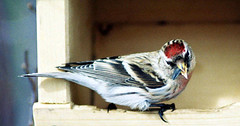Welcome to this week’s edition of Grand Rounds! Despite the fact that I have been ill this past week and weekend (I still am ill, as a matter of fact), I still managed to write and publish this, the 30th weekly installment of Grand Rounds, for all of you to read and enjoy! I created categories for each topic so you could more easily find your way around. You will also notice that some stories could easily have been included in several different categories; in that case, my choice for placing the story was made primarily based on how many submissions already existed in each category.
Rites of Passage:The process of getting into medical school can be daunting, requiring long years of study and preparation before the hopeful candidate even applies to med school, and then there’s that rite of passage, the Medical College Admissions Test (MCAT). For some people, just saying the name aloud makes their heart skip a beat. This report comes from a premed student,
TheSquire, who just took the
April MCAT.
How soon we forget those early days when we struggled to learn basic skills, such as taking a patient’s
blood pressure, but the author of
Top Of My Head takes us back in time by describing a few moments in her classroom with her students, who were learning how to take an accurate blood pressure reading.
Medical Practice:Kevin, MD discusses Red Sox manager, Terry Francona’s
hospitalization after he experienced mysterious chest pains and his subsequent diagnosis of a
virally-caused myocarditis or pericarditis.
Journal Club comments about the most recent
biventricular pacemaker study published in the
New England Journal of Medicine (NEJM). This blog entry includes a link to the original article and to an editorial about the procedure that also appears in the same issue of NEJM.
If a particular health care market is rapidly expanding, that means more money and personnel will be invested into it, right? Not necessarily, especially when you consider the expense of
mammography. This story is part II in a series written by
CodeBlueBlog.
Science writer Gina Kolata’s recent
NY Times piece,
The Body Heretic: It Scorns Our Efforts prompted
RCentor to write this response,
Working on the Probability Edge, where he concludes that Kolata is too fatalistic, that even though
we cannot change things, [..] we can certainly improve our odds.Mental Health:Dr. Sanity is a psychiatrist who wrote this interesting three-part essay, “
Narcissism and Society”. This series will certainly give you and your colleagues something interesting to talk about as you hang around the water cooler. All three parts are linked from an introductory prologue.
This double-feature essay,
Electroconvulsive Therapy and Bestiality, by
Dr. Maria is an interesting look at modern electroconvulsive therapy, which is nothing like what they showed us in
One Flew Over the Cuckoo’s Nest. This essay ends with a story of an animal lover whose fondness for his dog was threatening his marriage.
This essay,
A Swamp Plant & A Cactus is written by
a loving parent who is dealing with not one, but two, sons who suffer from a variety of mental and physical illnesses. Despite the similarities of their disorders, her sons’ disorders are manifested in opposite ways, so she compares them to a swamp plant and a cactus.
Medical Science:And now, for the best news of the week,
Chocolate Stops Cancer. This, according to a story published recently in
Science Daily, is due to a natural ingredient found in chocolate, pentameric procyanidin (pentamer), that apparently has cancer-fighting properties. The reaction of various special interests will be interesting, says
Interested Participant.
Red State Moron returned from a medical conference recently where he attended a lecture about elective Cesarean deliveries. In his article,
The Obstetric Buffet, he compares the advantages and risks to mothers from vaginal births versus Cesarean deliveries.
MedGadget, a blog that investigates emerging medical technologies, in this essay,
Nanoscience Meets Cochlear Implant, draws our attention to a report about a cochlear implant that might stimulate regrowth of hearing nerve cells. This essay includes links to press releases.
Quackery:Orac, as usual, comes through with another well-written story, the tragic account of
The Orange Man. This story discusses “alternative medicine” and how damaging it is when desperate people choose to believe the claims of quacks whose only care is lining their pockets with “blood money”.
Practical Support:Dr. Bob at
The Doctor is In explains his idea for providing health care for poor people in
Turning Back the Clock. As you might know, lack of health care to the un(der)employed is one of my top three blog rants, particularly since I am living this scenario right now. I think that the good Doctor’s idea is elegant; fund health care for the poor by providing tax credits to physicians who provide charity care.
Have you found yourself staring at a computer screen, wondering where the heck that note that you just wrote disappeared to? Well, join the club. According to
How to Kill Patients Through Bad Design, published by
Over My Med Body, medical usability is an increasingly important issue that will affect more medical practitioners as time goes on.
Medical Philosophy:Medviews is a blog written by a doctor who teaches a Health Policy class. As the result of a discussion in this class, he has written a particularly interesting story about the ethics of expending large resources on patients with limited life spans in
The Market for Hearts.
Different River writes a piece,
Doctors Without Conscience, about an article that recently appeared in the New England Journal of Medicine. The original article by Elie Wiesel, asks how doctors and other educated people can become murderers. Different River’s conclusion?
Academic education is not moral education; that is, it does not provide any morality whatsoever.In this whimsical essay,
Bioethics Dude compares diagnostic challenges encountered by Tom and Ray, the hosts of
CarTalk, to those encountered by medical doctors in the
Trouble with Diagnosis: Car Talk vs. Doctors.
Do gifts from pharmaceutical companies influence your choice of which medications you prescribe for your patients? No? Well, think again, according to
DoctorMo. According to a recent opinion linked from this essay, the evidence shows otherwise. DoctorMo’s essay,
Prescribing Under the Influence is part of a series of articles that will appear about this topic. (I just love the title of his essay, by the way!).
Sue Pelletier at
Capsules also discusses this same issue in
Is it possible to take the bias out of medical education? She concludes that other things, such as improved patient-doctor communications, often have a greater impact on patient care than what’s available in a physician’s medicine chest.
“Did you read my blog?” As everyone knows, keeping a blog is a hobby that is taking the world by storm, freeing people to express themselves semi-anonymously in writing. But can blogging affect the doctor-patient relationship
when patients blog about their doctors?
Shrinkette considers the implications in this essay, particularly for psychiatry.
Gripes:Blogborygmi took a break from his studies to talk about the
Multiple Gripe Test, otherwise known as the Medical Board Certification Exams, that he will be taking soon. This essay also could have been included in the “Rites of Passage” section.
Speaking of Medical Certification exams,
Aggravated DocSurg has a few interesting comments about the Medical Certification board exams in light of the FDA’s recent decision to allow silicone breast implants onto the market again in his article,
Interesting Precedent.
In this concise essay,
GruntDoc wonders why
a nurse with experience, a been-there and done-that nurse has to accept being addressed by their first name by anyone, especially new docs in
Patronizing Nurses.
Even though I am your host this week, I have been ill and unable to write much recently, but I didn’t want to disappoint you all by not giving you anything of mine to read. So I decided to link to my somewhat humorous
living will. I hope you enjoy it.
Reader Recommendations:One of the highest compliments that any writer can receive is when another writer recommends their material to others. This moving piece, written by
Head Nurse, was recommended by
Shrinkette. In this essay, Head Nurse eloquently describes her delight in, and
passion for her career.
This story could also have been included in the “Rites of Passage” category. The author of the blog,
The Chaplin News, recommended this story written by a Marine now medical student, “
Doc Russia”. In “
First Time for Stitches”, Doc Russia describes his first time stitching a laceration, located between the toes of a 13-year-old kid. His words of wisdom; “If you want to do procedures as a medical student, you have to fake it until you make it.”
This story is my own recommendation. Written by
Joe, it is the moving story about the sudden and unexpected hospitalization and long recovery of his friend, Vasco. It is published in four parts;
Part I,
Part II,
Part III, and
Part IV.
Next week,
Grand Rounds XXXI will be hosted by
Dr. Tony. If you did not get your submission published in this issue of Grand Rounds, please accept my sincere apologies. I was feeling much sicker as the evening wore on, and so I finally called it quits and published Grand Rounds at 1 am so I could go home and get some sleep. If you were not included in this issue of Grand Rounds, please be sure to send your article link to drtonyblog AT hillsides DOT com. Of course, new submissions are being sought by DrTony, too.
I am going home now for a well-deserved rest. If there are any errors that need to be corrected, please let me know by sending email to GrrlScientist at yahoo and I will take care of it as soon as humanely possible.
 As a primary example that people, Homo hubris, are slow learners that stubbornly persist in their selfish and destructive behavior, a
As a primary example that people, Homo hubris, are slow learners that stubbornly persist in their selfish and destructive behavior, a 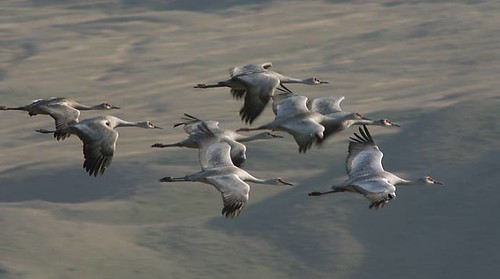
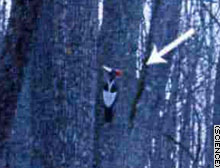 Photograph of A MODEL (NOT THE LIVE BIRD*) of an adult male published by Science magazine (right, arrow). This model was used for video comparisons (There are more linked pictures in my blog entries below, for comparison).
Photograph of A MODEL (NOT THE LIVE BIRD*) of an adult male published by Science magazine (right, arrow). This model was used for video comparisons (There are more linked pictures in my blog entries below, for comparison). 
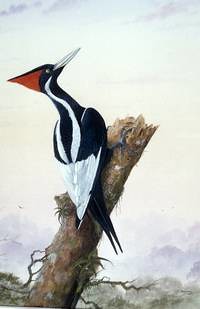 The Ivory-billed woodpecker, Campephilus principalis, is one of the largest woodpecker species in the world. It lives in old growth hardwood forests of the Mississippi Basin in the southern United States, and also on the island of Cuba. It was declared extinct in 1996 in the United States, after the last documented sighting of an adult female in 1944. It takes a long time before conservationists declare any species extinct because they do not want to give up trying to save an endangered species too soon.
The Ivory-billed woodpecker, Campephilus principalis, is one of the largest woodpecker species in the world. It lives in old growth hardwood forests of the Mississippi Basin in the southern United States, and also on the island of Cuba. It was declared extinct in 1996 in the United States, after the last documented sighting of an adult female in 1944. It takes a long time before conservationists declare any species extinct because they do not want to give up trying to save an endangered species too soon. 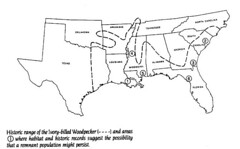
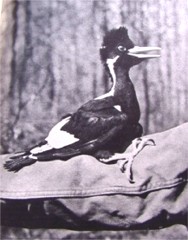

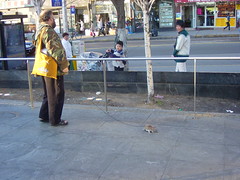


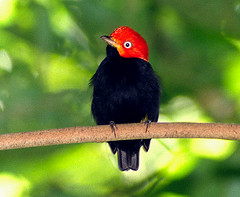 Manakins are brightly colored sparrow-sized birds from the tropical forests of South America. The males have a remarkable courtship display that involves elaborate dances and a "wing pop" that sounds like an electrical discharge. Thanks to the development of super high-speed cameras, the mystery of how a manakin makes his distinctive wing "pop"
Manakins are brightly colored sparrow-sized birds from the tropical forests of South America. The males have a remarkable courtship display that involves elaborate dances and a "wing pop" that sounds like an electrical discharge. Thanks to the development of super high-speed cameras, the mystery of how a manakin makes his distinctive wing "pop"  I found a rather lengthy but basic primer for those who of you are interested to learn more about
I found a rather lengthy but basic primer for those who of you are interested to learn more about 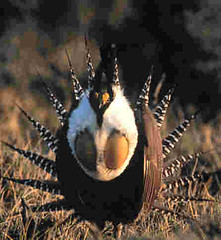 Due to increased oil drilling in their last strongholds, Colorado State Biologists say it is crucial to
Due to increased oil drilling in their last strongholds, Colorado State Biologists say it is crucial to 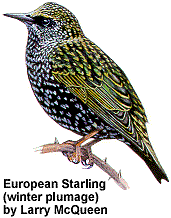 If you thought that there are a LOT of starlings in the United States, you were right: There are approximately 200 million European starlings, Sturnus vulgaris, in the USA today. These birds are not native to this country, even though people tend to accept them as such because "they've always been here". But we know that all of these birds are the offspring of 80 pairs of European starlings that were introduced into Central Park 120 years ago. These birds provide a powerful warning of the huge impact that a few exotic animals can have on local ecology and native species, as described in this article, the
If you thought that there are a LOT of starlings in the United States, you were right: There are approximately 200 million European starlings, Sturnus vulgaris, in the USA today. These birds are not native to this country, even though people tend to accept them as such because "they've always been here". But we know that all of these birds are the offspring of 80 pairs of European starlings that were introduced into Central Park 120 years ago. These birds provide a powerful warning of the huge impact that a few exotic animals can have on local ecology and native species, as described in this article, the 